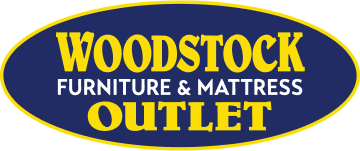“Why can’t I see prices on your website?” Ugh. There’s nothing quite as deflating as shopping around online, finding something you love, and then not being able to see the price. It’s irritating. It’s frustrating. And it can make you feel like you’re being strung along.
Understandably, you have found yourself asking questions like, “Why do I have to call to see how much something costs?” or “Why can’t you just show me the price online?” As consumers ourselves, we often ask these same questions. Such pricing schemes are common in the furniture industry, and yet very few companies are willing to talk about it.
So why do many furniture stores hide their prices behind buttons saying “Call for Price” or “Email for Price”? As we’ll discuss below, the most common culprit is often something called “minimum advertised price”. But first, let’s discuss a few reasons why retailers set their prices where they do.
MSRP vs. MAP vs. IMAP vs. MRP
Have you ever bought a new car, or shopped online for appliances, smartphones, TVs, or other consumer electronics? If so, you’re probably quite familiar with Manufacturer Suggested Retail Price, or MSRP. You may also know this as “list price” or “sticker price”.

MSRP is pretty straightforward. The maker of a product suggests a price to their retailers based on what they think their product is worth in the marketplace. This price is based on a number of factors including the cost of manufacturing, distribution, estimated retail markup, etc. In short, the manufacturer suggests pricing that will allow the retailer to turn a profit, while also setting the price across the market.
However, since MSRP is only a suggestion, retailers can technically charge or advertise above or below MSRP. This often results in stores selling below MSRP to compete with each other or to clear their inventory. Other times, retail stores will sell above MSRP if an item is in high demand or in short supply. For manufacturers who want their brands and products to maintain a certain value or reputation, this can present a problem. This eventually led to alternative pricing strategies like MAP, IMAP and MRP.
What is MAP (Minimum Advertised Price)?
The honest truth is that MSRP has been around for ages. As consumers, we’ve been conditioned to see it as the default, so we’re a bit shocked when we encounter something different. Especially when that “something” feels a lot less convenient. Enter MAP, or Minimum Advertised Price.
While many furniture brands operate on an MSRP price strategy, others use MAP, IMAP, or MRP pricing (we’ll discuss the others in detail below). In contrast to MSRP, MAP is when a manufacturer limits the minimum price that can be advertised by their retailers. When you see “Call for Price”, you are likely encountering a MAP or IMAP pricing model.
Rules about minimum advertised price apply equally to retailers’ websites, email promotions, print ads, TV spots and more. Unlike MSRP, MAP pricing can be enforced by the manufacturer. For instance, if a store advertises prices below the agreed upon MAP, the vendor can refuse to do business or even take legal action. That being said, the store can sell at a lower price if they wish – they just can’t advertise below the established MAP.
In this case, what are the retailer’s options? Well, there are really only two. The store can always show the MAP – which may be higher than the actual asking price. Or alternatively, they can ask customers to “Call for Best Price”. Given two less-than-ideal choices, retailers often choose the latter. This is the number one reason why furniture stores in particular can’t always display their lowest price online.
What is IMAP (Internet Minimum Advertised Price)?

That brings us to Internet Minimum Advertised Price, also known as IMAP. While very similar to MAP, IMAP focuses only on online pricing. Instead of limiting any and all advertised prices, it only limits the prices that retailers can share on the internet.
Manufacturers use this pricing strategy to protect both their brand reputation and retailer network from shady online sellers. IMAP defends traditional retail stores by keeping unauthorized, second-hand sellers from posing as official, licensed retailers. In turn, IMAP makes sure that these sellers aren’t able to drastically undercut prices.
So a manufacturer with an IMAP policy limits the display of prices by retailers online, but not elsewhere. And just like MAP above, the vendor doesn’t restrict the actual selling price. However, the slight differences between MAP and IMAP are lost on the typical online furniture shopper. While these pricing models can be beneficial for many vendors and retailers, the consumer is often left feeling frustrated. And that is unfortunate.
What is MRP (Minimum Resale Price)?
One final footnote about MAP and IMAP. Some manufacturers use these terms less-than-accurately to refer to pricing models that actually involve the setting of retail prices. This leads to confusion as these vendors casually use MAP or IMAP to describe pricing where both the advertised and actual price are set by the manufacturer.
The true name for this pricing strategy is MRP, or Minimum Resale Pricing. Alternatively, some companies call this Unilateral Pricing Policy (UPP). Tempur-Pedic is a great example of this within our industry. As a premium brand, Tempur-Pedic sets both the advertised and selling prices on their products to maintain the high value of their brand.
Although MRP may not keep you from seeing prices online, we thought it would be relevant to this discussion since it is commonly confused with MAP.
Special Order & Custom Order Furniture
Lastly, the final reason that you may not be able to see a price online, is if you are viewing a special or custom order product. Here at Woodstock Furniture & Mattress Outlet, we offer both special order and custom order furniture.
What do we mean when we say custom order or special order? And how are they different? In short, special order refers to pieces that we may not carry in stock but can order for you upon request. By contrast, custom order furniture is made to your exact specifications. For instance, perhaps you want a sofa with a certain fabric, on a certain frame, with specific cushions or pillows.
We partner with many premium furniture brands in order to offer a seemingly endless number of custom pieces. This includes hundreds of different frames, finishes, cushions, pillows, and leather and fabric upholstery options. If a price isn’t shown on an item, there is a decent chance that it has customizable options available. In this instance, the price is dependent upon the options you want.
With special order furniture, we may be familiar with the piece in question, but we do not stock it. This means that we must first check with the manufacturer about the current price. This being the case, we are not always able to show prices of special order products online.
Pricing at Woodstock Furniture & Mattress Outlet
In closing, we understand if these are not exactly the answers you were hoping for. Unfortunately, whether or not we can display our lowest price is sometimes beyond our control. We are proud to carry furniture, rugs and décor from over 80 brands, however, over a dozen of them limit how we price their products. Similarly, when it comes to custom and special order pieces, we aren’t always able to give a price immediately without additional information.
At Woodstock Furniture & Mattress Outlet, we promise to conduct our business in an honest, transparent, and customer-centric way. As such, we commit to always show our best prices wherever possible. So when you see “Call/Text for Best Price” on our website, please know that this is only out of obligation to our vendors, or because more info is needed. Despite this, if there is anything at all that we can do to make your online shopping experience more enjoyable and convenient, please let us know!
We hope this article was helpful to you. If so, be sure to follow us on Facebook and check out more of our FAQs and Educational Posts!
















